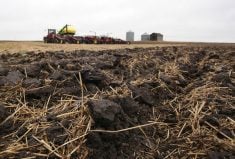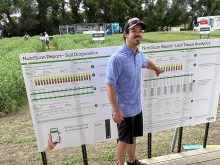NEW YORK (Reuters) — Sales of agricultural inputs such as fertilizers and crop care products have been near normal in the United States despite lower grain prices, while they are not as good in South America, according to agricultural input producers.
Executives from companies such as Mosaic, Bayer AG and Corteva said during last week’s BMO Global Farm to Market Conference that U.S. farmers remain in a good financial situation following some very profitable crops, before corn and soybean prices started to fall mid-way last year, and could afford to buy products.
“It is not great, but it is not bad either,” said Bob Reiter, executive vice-president of Bayer AG.
Read Also

Saskatchewan puts crown land auction on hold
Auctions of Saskatchewan crown lease land are once again on hold.
Added Ken Seitz, chief executive officer for Nutrien, the world’s largest potash maker: “We have price stability (in fertilizers)…. North America is having a normal planting season, our inventories are moving through the channel. While affordability is not what it was a few years ago, it is still good.”
Larger investments, such as acquisition of farm equipment, have suffered more, they said, given current high interest rates, which are an even larger challenge for farmers in South America, where rates are higher.
Seitz said that while fertilizer volumes have been moving near normal in the U.S., inventories are larger in Brazil, where he expects a slower recovery in demand, likely going later into 2024 and into 2025.
The recent spike in grain prices due to some delays in U.S. planting and the flooding in southern Brazil gave a boost to farmers, said Janine Sekulic, BMO Capital Markets’ managing director for agribusiness, east region.
She said U.S. farmers were very aggressive regarding selling for the last two weeks.
“We estimate that corn and soy sales rose to around 40 per cent of the 2024 crop, based on conversations we had with partners.”
The level is mostly in line with historical averages for this time of the year, she added.

















